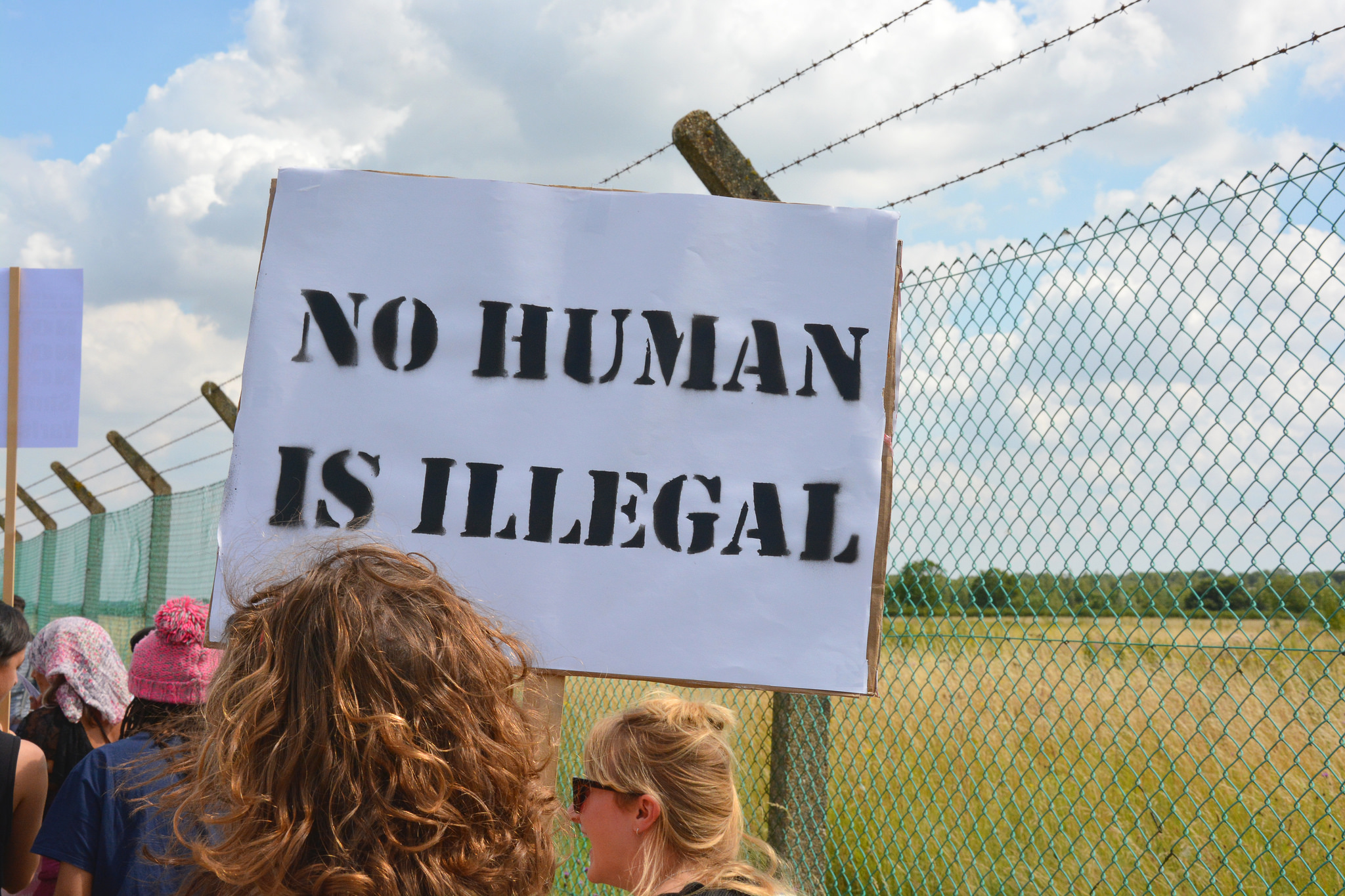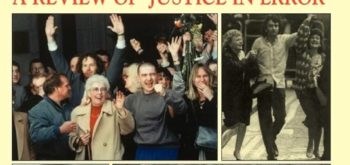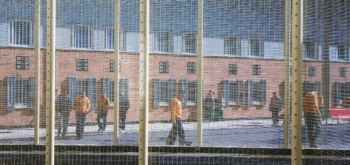 ‘It’s time to think again about immigration detention’
‘It’s time to think again about immigration detention’
In early September, the new Immigration Minister Robert Goodwill announced the closure of Dungavel, the only detention centre in Scotland. The centre will be replaced in late 2017 by a short-term holding facility at Glasgow Airport, where migrants will be held for a few days just before removal. The deeply unpopular indefinite detention of migrants in Scottish detention centres will come to an end.
If there have been few celebrations of the demise of Dungavel, it is because everything depends on what happens next. In the worst case scenario, this could be seriously bad news for migrants in Scotland in the return process. If detention business continues as usual, after being detained, they will simply be transferred after a few days to an English detention centre. Since there is no centre north of Lincolnshire, they will be many hours away from friends and family.
But more importantly, they will be in a different legal system: they may need to abandon any pending legal challenges in the Scottish courts, leave their Scottish solicitors, and start looking for a new English solicitor. Convenient for the Home Office in attempting to remove them, one might say.
Those of us who defend migrants’ rights tend to assume the worst of the government’s intentions, and there is unquestionably a serious risk that this scenario will come to pass. However, the closure of Dungavel does not take place in isolation. This is the third detention centre to close in the last 18 months, after Halsar and Dover.
The government has committed to a smaller detention estate, concentrated around the major airports, where fewer migrants are detained for less time. Ever since the cross-party Parliamentary inquiry called in March 2015 for a fundamental change in culture, following wide-ranging civil society mobilisation across the country, the government has been under pressure to reduce its harmful, expensive and wasteful reliance on the largest detention estate in Europe. After the Home Secretary’s own review, led by Stephen Shaw, came to similar conclusions early this year, the pressure for reform became overwhelming.
So an alternative, very different, interpretation of the post-Dungavel future is possible: Scotland may not need a proper detention centre because few migrants will be detained for more than the week permitted in a short-term holding facility. If detention is really used as a last resort, then in most cases, removal directions should be set before the point of detention, after migrants have fully participated in all the immigration procedures with support and advice. Longer detention periods should become unnecessary, apart from in exceptional circumstances.
Both visions are entirely possible, and both are entirely compatible with ministerial statements. Which comes to pass will depend on what happens to the UK-wide detention reform programme, announced by the government early this year. Stephen Shaw will be holding another review in late 2017, around the time that Dungavel closes: will he find meaningful reform, or just more of the same?
The answer depends to a large extent on whether the Home Office comes to believe that it can meet its objectives without such reliance on detention. In the current political context, giving up on managing migration is not going to be an option. So the question is whether or not the government’s immigration management priorities can only be met through detention. The last two years have made detention a problem for the government; but a sustained reduction will only be possible if alternatives can take its place.
Another way
The evidence suggests that detention is frequently unnecessary in terms of the government’s objectives. Most obviously, 55% of detained migrants are released back into the community, rather than removed. But beyond this, there are grounds to believe that the policy objectives of detention can be met in other ways.
The primary reason for detention in the UK is return. Most detained migrants are in the return process, having been refused asylum or other immigration applications. The assumption is frequently that migrants who have completed the immigration procedures will only return if they are detained. Yet there is much international evidence that immigration procedures and returns processes work most effectively if they are based on engagement with migrants, instead of enforcement.
Across the world, alternatives to detention have proved successful in stabilising migrants’ situations in the community while they work towards resolving their immigration cases, including exploring voluntary return alongside any other options. Governments from Sweden to Australia have found that they get better results by providing support, information and case management to migrants in the community than by locking them up. The International Detention Coalition has developed a model, based on examples of alternatives to detention in many countries around the world, setting out how alternatives can be effective in enabling migrants not to be detained and to engage with immigration systems.
In the UK context, alternatives can be particularly critical in the most politicised areas of immigration control. The Home Office remains committed to reintroducing a Detained Fast Track asylum process, by which thousands of asylum-seekers a year were detained until the Court of Appeal ruled the process ‘systemically unfair’ in litigation brought by my organisation, Detention Action. There is a political urge to process some types of asylum claims quickly, yet doing so in detention has proved toxic for the fairness of the process. If some form of quick processing is considered necessary, alternatives to detention can offer a way to do it in the community, without detention or unrealistic appeals deadlines.
Likewise, there is intense political pressure to detain and deport ex-offender migrants – yet many face considerable barriers to removal, including the impossibility of obtaining travel documents from their countries of origin. With no time limit on detention, many are detained for years, often until their detention is ruled unlawful by the courts. Yet Detention Action has piloted a small alternatives project, based on good practice from post-prison rehabilitation work, which is showing that people can be supported in the community in ways that minimise their risks of absconding or re-offending. We have worked with 23 young ex-offenders with a range of severity of offences, yet only two have been reconvicted for minor offences, and none received custodial sentences. The success of the project means that ex-offenders are now being released onto the project, sometimes at the point of finishing prisons sentences, avoiding potential periods of years in detention.
Such projects work because of the trust and understanding between migrants and community organisations. They are not easily replicable by a Home Office that tends to have a very poor reputation amongst refugee and migrant communities. Yet if detention is the only tool in the Home Offices’ arsenal, detention will continue to predominate.
The opportunity is there for community organisations to take the lead and develop alternatives to detention that can enable migrants to be released from detention or, better, not be detained at all. Ministers’ recognition that detention is a problem creates unprecedented scope for further reduction in the use of detention, if they can be convinced that alternatives exist. Such a radical change in the immigration system can only happen if communities, and migrants themselves, are involved, developing approaches and projects that are fair and that respect rights and dignity of migrants.
Detention Action next week launches a new report, Without Detention, which sets out how this could happen. The question of civil society participation in alternatives to detention is complex one, the risk of becoming an inadvertent tool of immigration control real. Yet without viable alternatives to detention, substantial reform and reductions in detention may not arrive. The opportunities are great: to prevent individuals going into detention, to get individuals out of detention, to reduce the size of the detention estate and to reshape an immigration system with an increasing focus on engagement instead of enforcement. We need a wide conversation about how this can happen.






